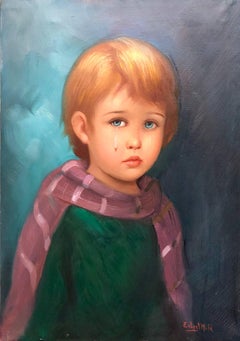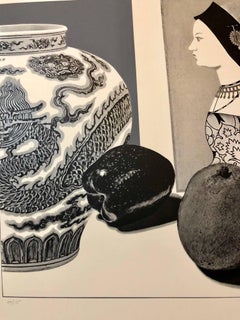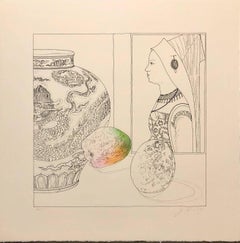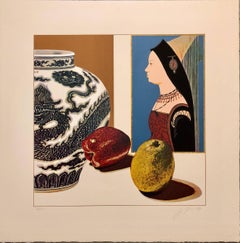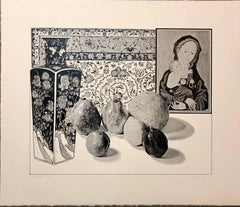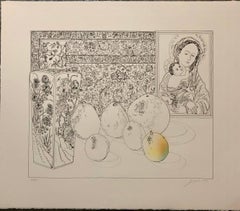Lions Gallery
1970s Modern Portrait Paintings
Canvas, Oil
1970s Pop Art Figurative Prints
Lithograph, Screen
1970s Pop Art Figurative Prints
Lithograph, Screen
1970s Pop Art Figurative Prints
Lithograph, Screen
1970s Pop Art Figurative Prints
Lithograph, Screen
1970s Pop Art Figurative Prints
Lithograph, Screen
1970s Expressionist Figurative Paintings
Canvas, Oil
1970s Modern Figurative Paintings
Paper, Oil
1970s Modern Figurative Paintings
Paper, Oil
1970s Modern Figurative Paintings
Paper, Oil
1970s Modern Figurative Paintings
Paper, Watercolor, Gouache
1970s Abstract Abstract Prints
Lithograph
1970s American Modern Figurative Paintings
Canvas, Oil
1970s American Modern Landscape Photography
Silver Gelatin
1970s Abstract Expressionist Abstract Paintings
Paper, Oil
1970s Pop Art Still-life Paintings
Canvas, Acrylic
1970s Fauvist Figurative Drawings and Watercolors
Watercolor
1970s Contemporary Abstract Paintings
Metal
1970s Art Deco Figurative Sculptures
Wood
1970s Modern Abstract Sculptures
Bronze, Stainless Steel
1970s American Realist Black and White Photography
Silver Gelatin
1970s Surrealist Figurative Prints
Drypoint, Etching, Lithograph
1970s Expressionist Abstract Sculptures
Bronze
1970s Pop Art Abstract Prints
Screen
1970s Pop Art Abstract Prints
Screen
1970s Pop Art Abstract Prints
Screen
1970s Pop Art Abstract Prints
Screen
1970s Modern Abstract Prints
Lithograph
1970s Abstract Abstract Prints
Lithograph
1970s American Modern Abstract Prints
Etching, Aquatint
1970s Abstract Abstract Prints
Lithograph
1970s Op Art Abstract Prints
Screen
1970s Arte Povera Mixed Media
Paint, Tape, Mixed Media, Lithograph
1970s Neo-Expressionist Abstract Paintings
Canvas, Oil
1970s Arte Povera Mixed Media
Paint, Tape, Mixed Media, Lithograph
1970s Arte Povera Mixed Media
Lithograph, Paint, Tape, Mixed Media
1970s Abstract Abstract Prints
Woodcut
1970s Expressionist Abstract Sculptures
Marble, Bronze
1970s Modern Mixed Media
Linen, Mixed Media, Panel
1970s Modern Figurative Sculptures
Enamel
1970s Minimalist Abstract Sculptures
Stone, Marble
1970s Surrealist Abstract Paintings
Canvas, Oil
1970s Op Art Abstract Paintings
Oil
1970s Surrealist Abstract Paintings
Canvas, Oil
1970s Surrealist Abstract Paintings
Canvas, Oil
1970s Abstract Abstract Paintings
Canvas, Oil
1970s Surrealist Abstract Paintings
Canvas, Oil
1970s Modern Abstract Paintings
Brass
1970s Contemporary Figurative Drawings and Watercolors
Paper, Pencil
1970s Contemporary Abstract Paintings
Canvas, Oil
1970s Modern Portrait Paintings
Acrylic Polymer, Acrylic, Canvas
1970s Neo-Expressionist Abstract Paintings
Canvas, Oil
1970s Op Art Abstract Prints
Screen
1970s Neo-Expressionist Abstract Paintings
Canvas, Oil
1970s Expressionist Figurative Prints
Woodcut
1970s Expressionist Figurative Prints
Woodcut
1970s Expressionist Figurative Prints
Woodcut
1970s Expressionist Figurative Prints
Woodcut
1970s Expressionist Figurative Prints
Woodcut
1970s Post-Modern Animal Paintings
Mixed Media, Board
